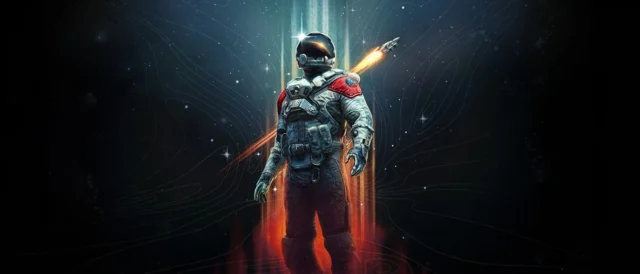
Which a part of a roguelike is your roguelike like? This isn’t only a PC gaming tongue tornado – it’s additionally the query each developer has to ask when endeavor a venture that’s meant to evoke that revered RPG sub-genre.
Will the game be a roguelike as a result of it depends on the ever-looming risk of permadeath, or as a result of it’s turn-based, or as a result of it takes place in winding dungeons rendered unmappable by procedural era? Each studio should select which elements belong in its venture – and the way will be altered with out diminishing the repeatable attract of the roguelike.
For Husban ‘Mcdoogleh’ Siddiqi, the solo developer behind Champion’s Ascent, the reply to that query has modified over time. At first, the game took on not solely the mechanics however the traditional subterranean setting of the roguelike – however like Spelunky and FTL: Faster Than Light, the venture has since turned out to have a personality all of its personal, one which not all the style’s well-known parts can get on with.
Dungeons: to maintain or to not hold?
“Initially the goal was to generate dungeons,” Siddiqi tells us. “But through the course of development I realised that, actually, given both how the player moves in the game as well as the enemies they come across, going through a series of rooms is quite boring.”
This was an issue. Siddiqi’s answer has been to construct extra open areas to go well with the quick and punchy fight – to the extent that surprised enemies see stars – of his game. While in conventional roguelikes progress is made step-by-step, slowly and thoroughly, Champion’s Ascent bears an adventurous spirit that sees you stride ahead at a hearty tempo. And so it turned a greater roguelike for the lack of one of many style’s hallmarks.
games have now give you sensible and fascinating methods of guiding the participant in open areas
“The levels were completely changed,” Siddiqi says. “During the course of feedback I was told I had enough pieces to play around with – so why didn’t I just focus on getting those pieces going? That’s definitely one of the issues as a solo developer, finding the balance between cutting back too much and putting enough in.”
Thankfully, that dramatic shift in construction has been supported by the know-how behind the game. “The thing Unreal Engine 4 offers is the flexibility to quickly experiment with and prototype something,” Siddiqi says, “which is why I was able to pivot.”
Epic’s visible scripting system, Blueprint, has been instrumental to the entire course of too. “It’s basically like drag and drop programming,” Siddiqi says. “Rather than going into a text editor and writing out a whole bunch of text scripts or code, you make a series of connections. And the nice thing about that is you’re able to set it up very quickly.”
A story of two Zeldas
In the unique The Legend of Zelda – not a roguelike, however a game that may be thought-about one if launched at this time – you had been warned firstly of the game that it was harmful to go alone, however given no means by which to arrange your self for that hazard. Well, you got a sword, however there have been no tutorials, maps, nor codexes to seek advice from.
“When I was growing up, games in certain genres would tell you almost nothing and it would be up to you to explore, understand, and figure it out,” Siddiqi says. “I’m presenting a scenario or environment to the player, and how they go about doing it is up to them. That’s definitely something I feel is missing from games now.”
There are methods, nonetheless, to make this hardcore philosophy extra palatable in a recent gaming world not so enamoured with excessive problem. As it seems, there are even technique of directing you whereas letting you assume it’s your personal thought. Enter Zelda. Again.
“A lot of games have now come up with really smart and interesting ways of guiding the player in open spaces,” Siddiqi says. “Breath of the Wild gives you a combination of varying heights and colours that subconsciously reads as, ‘That looks interesting, I’ll go in that direction’.”
Siddiqi is especially enamoured with the game’s maze-like Lost Woods – during which Nintendo employed refined particle results to assist participant navigation. Perhaps you had been aware of the embers out of your torch drifting in the direction of the right path; maybe not. Either method, that mild encouragement accompanied you thru the fog. It’s an strategy Siddiqi is adopting for Champion’s Ascent.
“The player can think for themselves, and it’s almost like just placing the right elements in a manner such that they’ll put the pieces together and figure it out,” he says. “The only tricky part is with level generation – making sure that the markers don’t accidentally land in the wrong spot, so that you end up guiding the player to a dead end.”
That’s a specific model of deviousness even probably the most famously punishing style in PC games received’t stoop to.
Champion’s Ascent is coming to PC. Unreal Engine four growth is now free.
In this sponsored collection, we’re how game builders are profiting from Unreal Engine four to create a brand new era of PC games. With due to Epic Games and Husban ‘Mcdoogleh’ Siddiqi.
Source





